Yahoo Answers is shutting down on May 4th, 2021 (Eastern Time) and the Yahoo Answers website is now in read-only mode. There will be no changes to other Yahoo properties or services, or your Yahoo account. You can find more information about the Yahoo Answers shutdown and how to download your data on this help page.
How can I get rid of this spyware?
My desktop has changed to a blue screen with 'Warning! Spyware detected on your computer'. I can't get rid of it. I have tried a number of free programs to remove spyware, most of which detect it easily but then want me to pay a registration fee to remove it. AVG (which I had) doesn'w work and wont recognise updates. Spybot also doesn't work because it can't find any updates. Adaware 2008 doesn't fix it either.
Please help. I need my laptop to function so I can get lecture notes.
10 Answers
- Anonymous1 decade agoFavorite Answer
If you feel up to it.....
Use a friends computer and get some software on CD using your friends intarweb connection...
Get adaware from lavasoft for apyware, trojans....look up the virus name on the Symantec site or the McAfee site. Some come with free removal tools, and some, you need to purchase the software.
Spyware is computer software that is installed surreptitiously on a personal computer to intercept or take partial control over the user's interaction with the computer, without the user's informed consent.
While the term spyware suggests software that secretly monitors the user's behavior, the functions of spyware extend well beyond simple monitoring. Spyware programs can collect various types of personal information, such as Internet surfing habit, sites that have been visited, but can also interfere with user control of the computer in other ways, such as installing additional software, redirecting Web browser activity, accessing websites blindly that will cause more harmful viruses, or diverting advertising revenue to a third party. Spyware can even change computer settings, resulting in slow connection speeds, different home pages, and loss of Internet or other programs. In an attempt to increase the understanding of spyware, a more formal classification of its included software types is captured under the term privacy-invasive software.
In response to the emergence of spyware, a small industry has sprung up dealing in anti-spyware software. Running anti-spyware software has become a widely recognized element of computer security best practices for Microsoft Windows desktop computers. A number of jurisdictions have passed anti-spyware laws, which usually target any software that is surreptitiously installed to control a user's computer
-=Anti-spyware programs=-
Lavasoft's Ad-Aware 2008Many programmers and some commercial firms have released products designed to remove or block spyware. Steve Gibson's OptOut pioneered a growing category. Programs such as Lavasoft's Ad-Aware SE (free scans for non-commercial users, must pay for other features) and Patrick Kolla's Spybot - Search & Destroy (all features free for non-commercial use) rapidly gained popularity as effective tools to remove, and in some cases intercept, spyware programs. More recently Microsoft acquired the GIANT AntiSpyware software, rebranding it as Windows AntiSpyware beta and releasing it as a free download for Genuine Windows XP and Windows 2003 users. In 2006, Microsoft renamed the beta software to Windows Defender (free), and it was released as a free download in October 2006 and is included as standard with Windows Vista. Other well-known commercial anti-spyware products include:
PC Tools's Spyware Doctor (free scans but you have to pay to remove the spyware)
Sunbelt Software's Counterspy (15-day free trial)
Trend Micro's HijackThis (free)
Webroot Software's Spy Sweeper (free version does not remove spyware)
ParetoLogic's Anti-Spyware and XoftSpy SE (free version does not remove spyware)
Major anti-virus firms such as Symantec, McAfee and Sophos have come later to the table, adding anti-spyware features to their existing anti-virus products. Early on, anti-virus firms expressed reluctance to add anti-spyware functions, citing lawsuits brought by spyware authors against the authors of web sites and programs which described their products as "spyware". However, recent versions of these major firms' home and business anti-virus products do include anti-spyware functions, albeit treated differently from viruses. Symantec Anti-Virus, for instance, categorizes spyware programs as "extended threats" and now offers real-time protection from them (as it does for viruses).
Recently, the anti-virus company Grisoft, creator of AVG Anti-Virus, acquired anti-spyware firm Ewido Networks, re-labeling their Ewido anti-spyware program as AVG Anti-Spyware Professional Edition. AVG also used this product to add an integrated anti-spyware solution to some versions of the AVG Anti-Virus family of products, plus made a freeware AVG Anti-Spyware Free Edition available for private and non-commercial use. This shows a trend by anti virus companies to launch a dedicated solution to spyware and malware. Zone Labs, creator of Zone Alarm firewall have also released an anti-spyware program.
-=Fake anti-spyware programs=-
See also: List of fake anti-spyware programs
See also: Rogue software
Malicious programmers have released a large number of fake anti-spyware programs, and widely distributed Web banner ads now spuriously warn users that their computers have been infected with spyware, directing them to purchase programs which do not actually remove spyware—or worse, may add more spyware of their own.[44][45]
The recent proliferation of fake or spoofed antivirus products has occasioned some concern. Such products often bill themselves as antispyware, antivirus, or registry cleaners, and sometimes feature popups prompting users to install them. This software is called rogue software.
It recommended that users do not install any freeware claiming to be anti-spyware unless it is verified to be legitimate. Some known offenders include:
AntiVirus Gold
ContraVirus
Errorsafe (AKA system doctor)
MacSweeper
PAL Spyware Remover
Pest Trap
PSGuard
SpywareStrike
Spyware Quake
Spydawn
Spylocked
SpyShredder
Spy Sheriff
Spy Wiper
UltimateCleaner
WinAntiVirus Pro 2006
WinFixer
WorldAntiSpy
- 1 decade ago
Get something more powerful
3. Run Malwarebytes Anti-Malware
http://securitynewsfromthenet.blogspot.com/2008/03...
4. Run the anti spyware removal programs spybot http://securitynewsfromthenet.blogspot.com/2007/03...
5 Run Superantispyware http://securitynewsfromthenet.blogspot.com/2007/04...
6. Run a complete scan with free curing utility Dr.Web CureIt!
- Anonymous1 decade ago
You should use an antivirus program and antispyware software, because your computer is now infected with viruses and/or spyware.
Here you have more information on computer security, as well as good and free programs that you can download into your computer:
The website list top ten the best and newest anti-spyware in 2007.
All are safe and can be trusted and you can download one.
- Anonymous1 decade ago
Buy and install a good Internet Security Suite. ($45 means 90 cents per week)
FREE stuff is rubbish.
Source(s): Norton user - Anonymous1 decade ago
i suggest you download spybot search and destroy is a good program to remove spyware download it here http://www.safer-networking.org/en/mirrors/index.h...
- GLv 71 decade ago
Your PC is infected with a smitfraud trojan. Go here to remove it free useing the smitfraud fix
http://siri.geekstogo.com/SmitfraudFix.php
Or,
- FoxLv 61 decade ago
http://pack.google.com/intl/en/pack_installer_new....
Select norton Security Scan and Spyware Doctor. Both free.
- 1 decade ago
try changing your desktop picture it's possible it was accidentally set as the desktop image.
- Anonymous1 decade ago
ttry this, hope it will help



